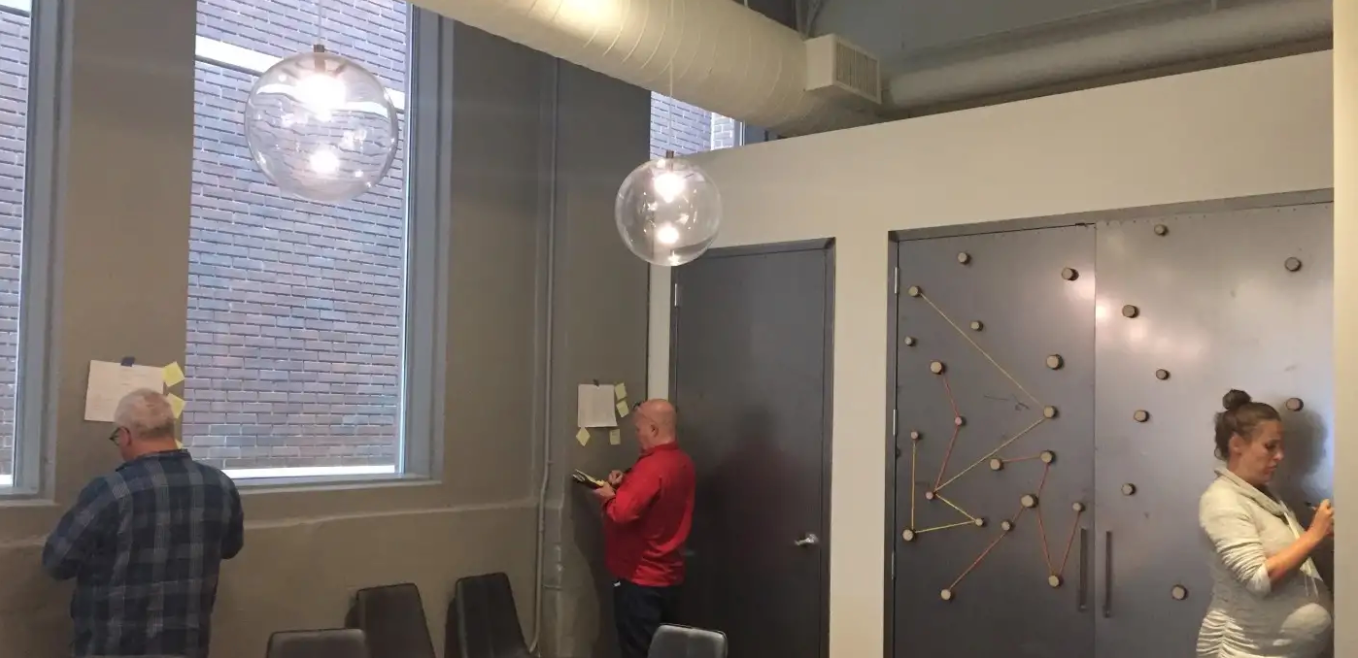Neutralize Design Sprint politics using these simple methods
Organizational politics are the enemy of great work and if you aren’t doing great work, why bother?
I’ve seen it many times…
The person with the most political power in an organization shows up to a meeting and everyone freezes.
A team panders to the title heavyweight in the room waiting until that person speaks so the group can align their point of view with the speaker’s POV.
What started as a group of people full of energy and great ideas becomes a strained and apprehensive team in the presence of a stakeholder (who has the power to shut their project down with upcoming budget decisions).
Does it have to be this way? No way. And Design Sprints can prove it.
The magic of the Design Sprint is its ability to neutralize politics.
With each phase, techniques are used to empower each participant, regardless of political power. Ideas and contributions from the team’s lowest-ranking member are equal to that of any executive or high-ranking member.
When I work with teams, I have frank conversations about politics and team dynamics going into the Sprint. The agenda I design takes into consideration the realities of those dynamics. I use methods to draw out ideas from everyone in the room and facilitate sharing and dialog so that politics aren’t what matters and great ideas can shine through.
IDEATION METHODS
Rapid Fire Ideation:
Use this method to generate new ideas
Have each person work quietly alone against the clock, drawing one idea per post-it and coming up with as many ideas as possible
Prioritize QUANTITY over quality
Ask people to share popcorn-style and build on one another’s ideas at the wall
Ask the quieter or least politically powerful people to share first, and save the higher-ranking and louder members for last
Use one color sticky note for the ideas and keep another color to label themes
Storyboarding:
Using 8x11 or 11x17 paper, have each person draw their best version of an idea in storyboard format
Every storyboard should focus on the experience our user is having: How does the experience show up in their life? What do they touch/see/do along the way?
Have each person share their story with the group
You can have them share presentation-style or have participants hand in the storyboards and post anonymously for review
Solution Sketch:
Outlined in the “Sprint” book: https://designsprintkit.withgoogle.com/methods/sketch/solution-sketch/
Each sketch should be self-explanatory and stand alone, meaning that participants may need to add notations or interaction notes below their drawings
Have each person hand in their sketch to be posted on the wall by the facilitator
Do your best to keep sketch authors anonymous
VOTING METHODS
Dot Voting:
Dot voting can be applied to all of the above —rapid fire ideation, storyboards or solution sketches
Give each person 2–3 dots to spend on the ideas they want to move forward with or focus on
I often frame this as “if you could only do 3 things tomorrow, what would they be?”
Have each person take a moment to mentally select their favorites before proceeding to the wall
Cue voting
Have political heavyweights vote last
Anonymous Feedback:
Can be applied to storyboards or solution sketches
Have each person in the group reviews ideas. I like to post them around the room and spread them out so that reviewers can move from one idea to the next
Request that team members write their feedback using “I like…” “I wish…” “I wonder…” on the BACK of sticky notes so that the feedback can’t be seen
Have participants stick feedback notes next to the ideas
When feedback is done, have each person collect their own storyboard or sketch and the associated feedback notes
Taking the feedback into consideration, have each person refine their work
Number Voting:
Number the core ideas / themes on the wall
Have team members cast their vote for their top 2–3 by writing the numbers on sticky notes and handing the ballots in
Then, have the facilitator count votes and ranks ideas accordingly
REVIEW / DECIDING
Decider in the Room:
Ideally your team has the autonomy and ability to make the decisions needed during the Sprint together
The work should be collaborative and methods will drive out winning ideas but you will still need a “decider” on the team for tie-breaking calls
The decider should also have visibility into the rest of the organization to understand constraints that need to be considered
The decider will also be on point to gather any additional information or answers to questions along the way
Decider Review:
Sometimes it’s better not to have the “decider” in the room because they are polarizing or logistically cannot join
When this is the case, ask the decider to join 1–2 times per day for set review “moments” where they are taken through the work and given the opportunity to weigh in
TALK ABOUT IT: DOCUMENT IT
Before beginning your Sprint, it is MOST important to have conversations to understand the politics that need to be considered. If there is a lot to navigate, do the work before the the Sprint to set your team up for success.
Sprint Brief:
Work with stakeholders to align expectations before going into the Sprint and document those in a “Sprint Brief”
Document the context — any background, considerations, constraints
Articulate and document the problem statement: what is the team’s charge during the Sprint?
Identify and capture any inputs to the work: research, historical learning from past projects
Agree on success criteria for the Sprint
Assign participants and be sure that they have clear authority and autonomy to move forward and tackle the problem they’ve been assigned




